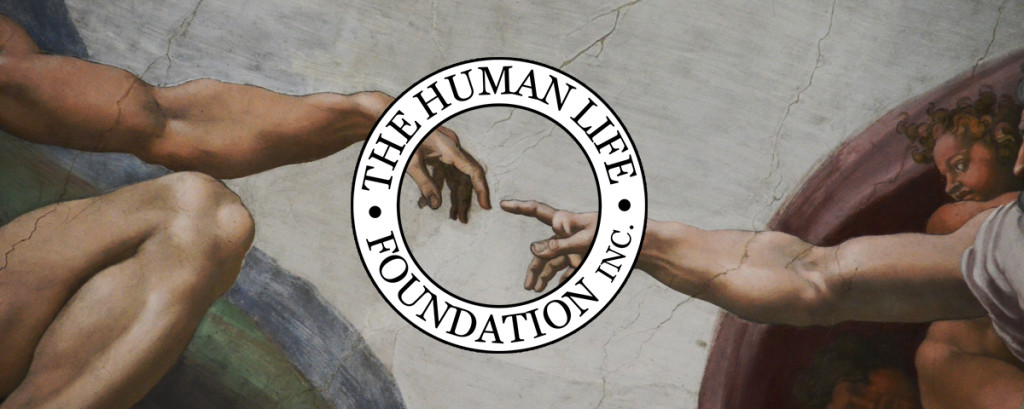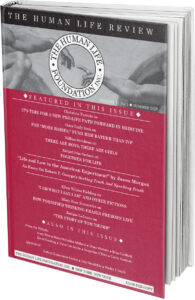The Pope Who Knew Us
In the fall of 1979, less than a year after being elected pope, John Paul II took America by storm. Landing in Boston and stopping at major eastern cities, the youthful pontiff lifted the spirits of a nation that was dragging its way toward the end of a long, dispiriting decade—Kent State; the Weather Underground; America’s dishonorable flight from Saigon and the boat people; Watergate and Nixon’s resignation; gas rationing and long lines at the pump. Not even the fanfare of the 1976 Bicentennial could lift the nation from its doldrums, with many scholars using the occasion to deride the founders and our nation. (The decade closed with the beginning of the Iran hostage crisis in November 1979.)
Yet here was the Polish pope who had lived and resisted through cruel reigns of Nazis and Soviets telling us to have hope in Christ. At 59, he cut a youngish figure for a pontiff and gave a modern tempo to the intellectual and moral traditions of the Catholic Church while upholding eternal truths. This mix of youthful hope and enduring wisdom was just the tonic America needed at the time. John Paul seemed like a prophetic figure from “a far place.”
Standing like a rock star at center stage in New York’s Madison Square Garden before thousands of Catholic teenagers, the pope spoke of contemporary issues in a deeper manner than the pop icons of the day:
“When you wonder about the mystery of yourself, look to Christ who gives you the meaning of life. When you wonder what it means to be a mature person, look to Christ who is the fullness of humanity. And when you wonder about your role in the future of the world and of the United States, look to Christ. Only in Christ will you fulfill your potential as an American citizen and as a citizen of the world community.”
But what really caught the hearts and minds of the teens, and the large TV audience, was John Paul’s deeply personal, unscripted response to the spirit of the young people. Waiting for the crowd to settle down, he began to groan (apparently with the Holy Spirit that St. Paul mentions in Romans 8:26), then uttered, “Woo! Woo!” in tempo to the heartbeat of the crowd. My brother and I —20-something, semi-lapsed Catholics—looked in disbelief at the TV screen and then at one another, each of us thinking, “We have a pope who says, ‘Woo!’”
After the Garden event, the pope was scheduled to ride along Broadway in Lower Manhattan, through the Canyon of Heroes in a ticker-tape parade usually reserved for victorious generals or World Series champs. Since we lived near City Hall, my brother and I rushed out to find a spot along the avenue lined with well-wishers. When a cry rose up from the crowd, my brother stepped onto the base of a streetlamp to get a better look as I jumped and swayed to catch even a slight glimpse of the waving figure in the white cassock. “He looked right at me!” my brother called down to me. “I waved at him, I caught his eye, and he looked right at me, like he knew me, like he knew my name.”
As we would later learn, almost everyone in the crowd felt the same way; just as anyone who ever met John Paul in person felt when he looked at them—as if they were the only person in the world. It was the gaze of a saint, based on the love of Christ.
My brother and I would soon return to the regular practice of our faith, and I would encounter that deep and knowing look of John Paul a few times myself as a reporter for Catholic New York in the 1990s.
In 1993, at World Youth Day in Denver, I had a special pass to enter the cathedral and approach the pope for a blessing in the sanctuary. I stood in the back, waiting on the long line for my turn, when those JPII eyes met mine from a distance. I was moved to look around and saw a distraught teen from New York. She had lost her pass, and security would not let her enter. I went over and gave her mine and watched as she later got a special blessing from the pope, whom I knew would have been pleased with my sacrifice.
Two years later, I was in St. Patrick’s Cathedral for John Paul’s second visit to New York. The print reporters, from religious and secular papers, were herded into a side altar on the cathedral’s north side. One well-dressed journalist, seeing I was from Catholic New York, whispered that she couldn’t believe how many among us were in jeans and T-shirts. Although she was Jewish, she told me, she knew how to dress in church. When the pope entered, she lost all objectivity as John Paul waved in our direction, and she vigorously waved back.
When John Paul passed away at the Vatican on April 2, 2005, the eve of Divine Mercy Sunday, a feast he inaugurated, these memories and many others came to mind. I was then managing editor of Columbia, the monthly magazine of the Knights of Columbus. Having followed him for more than 20 years, I knew I was blessed to be among the JPII Generation. Now a saint in heaven, he was a pope who, even from a distance, knew us by name.
May his strong spirit live in our hearts as we celebrate his feast day tomorrow, October 22.










Thank you for citing JP2’s words at MSG. Their weight hits me today with full force. As an 11-year-old in ’79, I was probably preoccupied with the Pirates and the Orioles